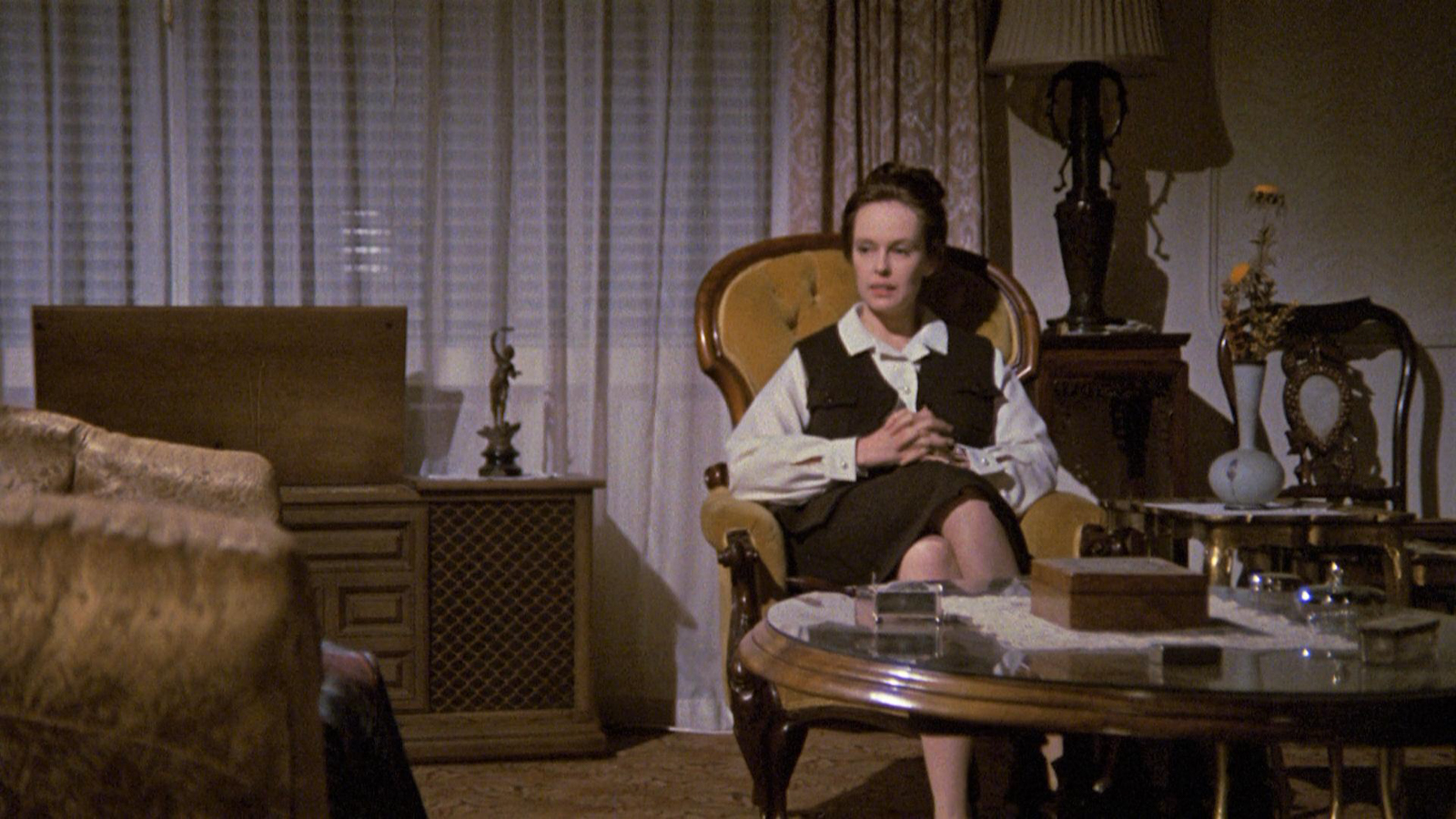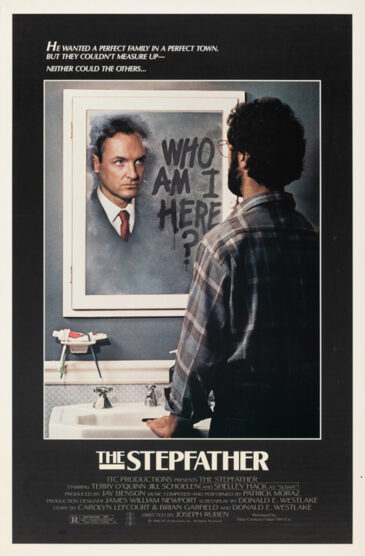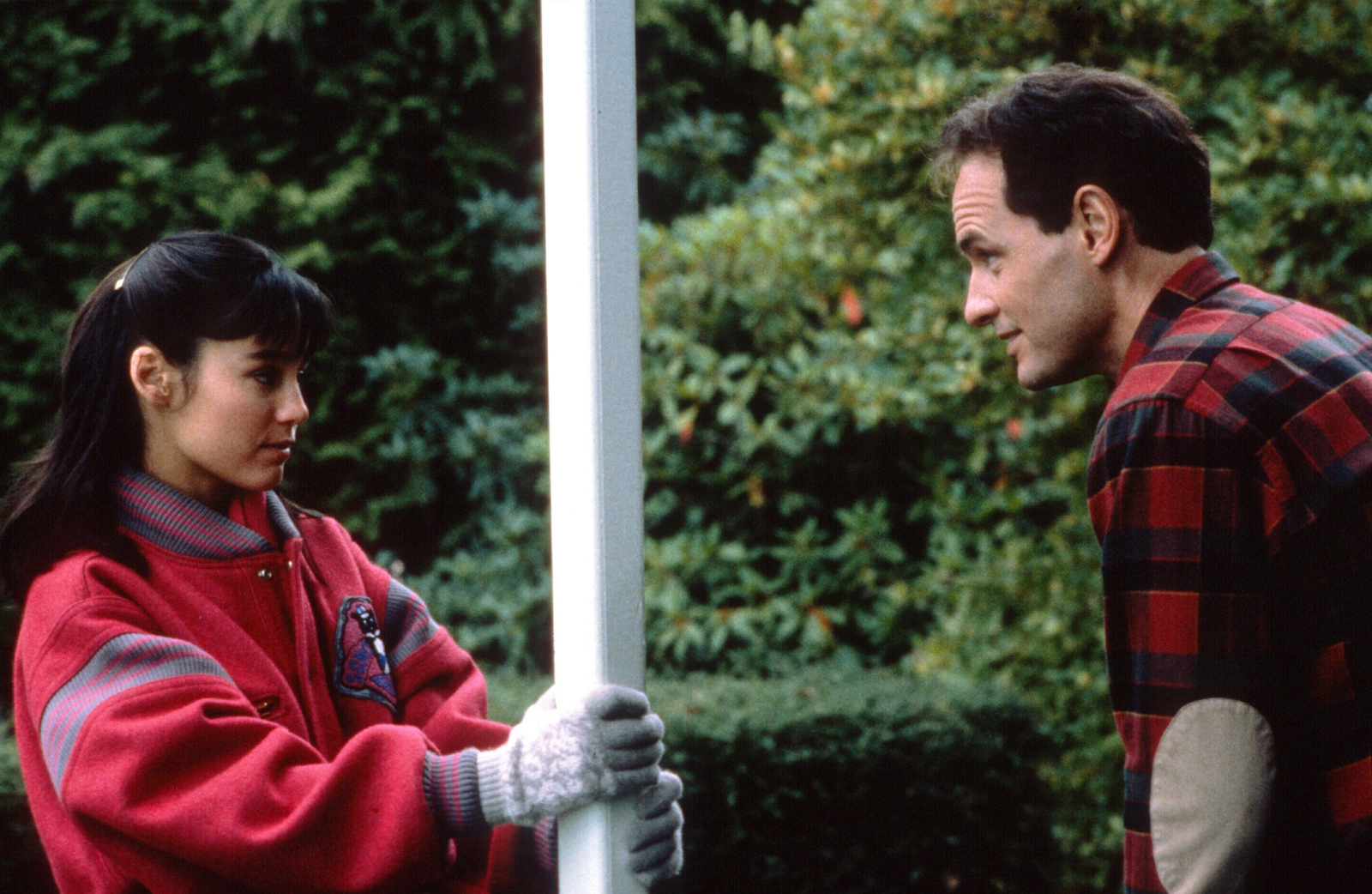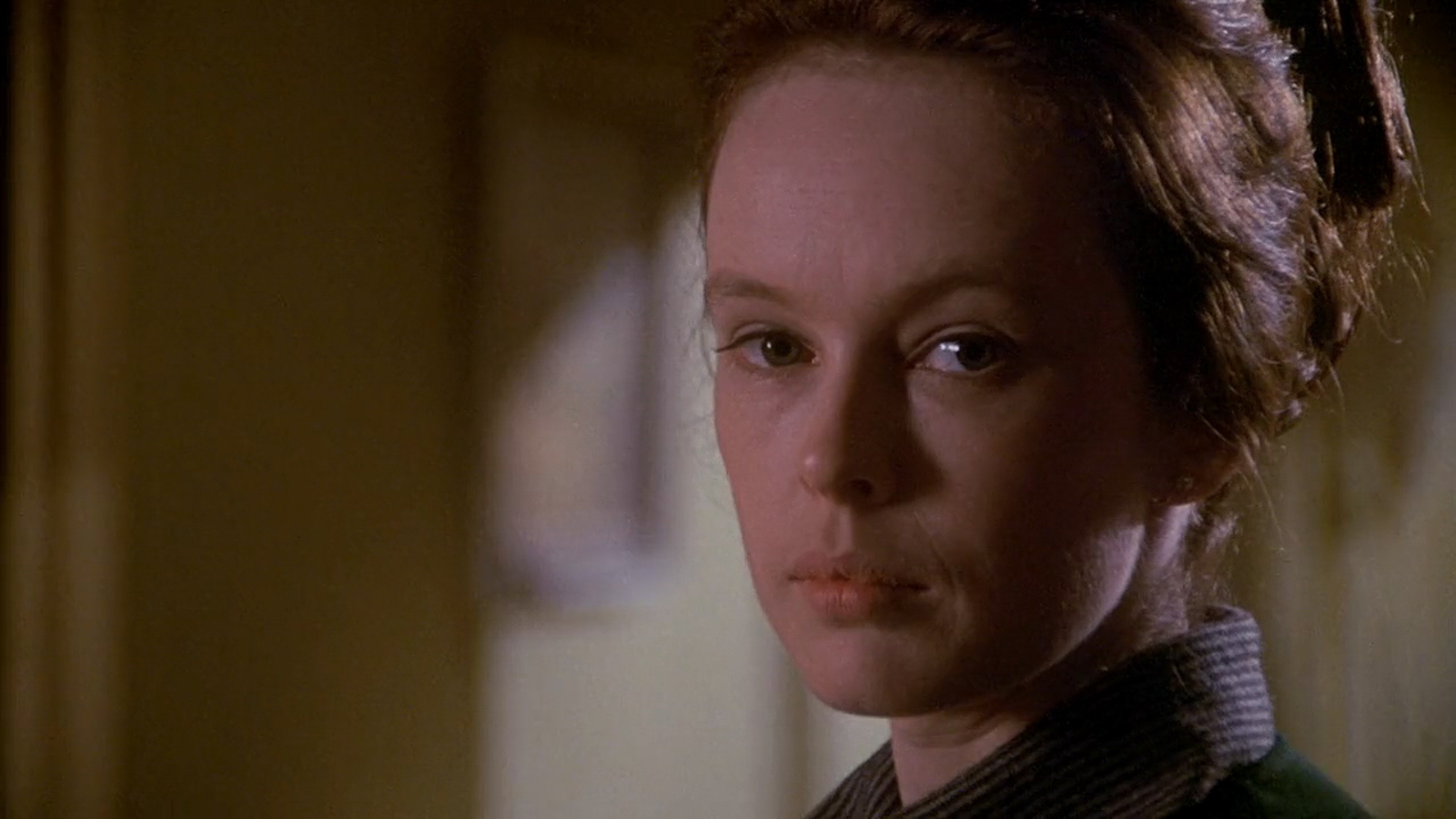The boy sits on a bench in the rain, shivering. From a window in her manor home overlooking Tatlow Park, a lonely woman watches him. She decides to invite him in. The boy can’t speak, but he’s grateful for shelter and food and a warm bed. The two are from different generations: an older, genteel Vancouver where desire and sex aren’t spoken of, and the radical counter-culture emerging at the end of the ’60s. Soon they are caught in a deadly game of obsession and desire.
Robert Altman’s That Cold Day in the Park is a psychological thriller both shot and set in Vancouver. Sandy Dennis plays Frances Austen, whose attempts to control the boy (Michael Burns) lead her to discover uncomfortable truths about herself and the world she lives in. Filmed in 1969, Cold Day captures an image Vancouver once held of itself—a charming colonial city, naturally beautiful and resistant to change. Almost 20 years later, another psychological thriller,The Stepfather, would use Vancouver to tell a similar story of violence lurking within a seemingly tranquil city.
Vancouver was anything but tranquil in 1969. The first women’s liberation movement in B.C., the Vancouver Women’s Caucus, was founded the year before. The caucus organized a cross-country “abortion caravan” to demand “the decriminalization of abortion, equal access to health services, and the development of safe and reliable methods of birth control,” according to organizer Frances Jane Wasserlein. At Simon Fraser University, as Eryk Martin writes, “From 1967 to 1969, activists organized a teaching assistant strike, a student occupation of one of the administration buildings, and a faculty strike supported by thousands of sympathetic students.” Hippies and American draft dodgers drew the ire of Vancouver’s mayor, Tom Campbell, who, in an interview with the CBC in 1968, called them “parasites,” “a scum community,” and “first class troublemakers.”

This clash of social forces is apparent in That Cold Day in the Park. After Frances locks the boy in her guest room for the night, he escapes through the window, heading to a float home on Burrard Inlet where his pot-smoking sister lives. Struck by desire, Frances visits a gynecologist’s office to be fitted for a diaphragm. Later, she combs Seymour Street, passing Seymour Billiards and Telesound Recording Studios, seeking a prostitute for the boy. The contrast of empty, rain-swept Tatlow Park with the teeming street life shows the conflict within Frances herself and mirrors the social conflict within late-’60s Vancouver.
The year before his breakthrough with M*A*S*H, Altman directed Cold Day from an adaptation by Gillian Freeman of a Richard Miles novel, originally set in London’s Hyde Park. Vancouver was used mainly for budgeting reasons and its lack of union regulations, but also for its look and atmosphere. In a CBC news clip from October 1968, Altman mentions that he chose the city because of “Bad weather … we needed dark grey clouds.” Interviewed by David Spaner for Dreaming in the Rain, Altman would add that Vancouver “gave me a little bit of a strange, I would say foreign look to the film. It wasn’t familiar territory.” While Killarney Manor, overlooking Tatlow Park, was used as the exterior of Frances’s house, the interior was created on a soundstage at Panorama Studios in West Vancouver. Altman would return to Vancouver a year later to make his western masterpiece McCabe and Mrs. Miller.

In the bathroom of a house in a quiet leafy neighbourhood, a man grooms and dresses himself, changing his appearance. He walks through the hallway, passing the bodies of his wife and stepchild without so much as a glance. On the sidewalk he smiles and waves at a neighbour. He could be anyone. Soon the man is on board a ferry, taking him to a new town, where the cycle of rage and murder will begin again.
Released in 1987, the year after Expo 86, The Stepfather was filmed in Vancouver, though set around the Pacific Northwest. Like That Cold Day in the Park, The Stepfather uses the city to tell a story of violence lurking within an idyllic community. Terry O’Quinn plays Jerry Blake, a realtor whose stepdaughter, Stephanie (Jill Schoelen), suspects he is a serial killer. Obsessed with creating the perfect family, Jerry marries widowed mothers then lashes out when each new family disappoints him. As Stephanie uncovers the truth, pressure mounts, and Jerry’s mask of sanity falls away. “Wait a minute, who am I here?” he asks.
Vancouver was asking itself a similar question in the mid-’80s. Commercials for Expo 86 extolled the city’s sophistication and multiculturalism, and its infrastructure was overhauled to live up to this image. According to Belle Puri, “The list of Expo legacies is long, including the Alex Fraser Bridge, BC Place, the Cambie Bridge, Canada Place Trade and Convention Centre, the Coquihalla Highway and Science World.” Yet the five-month-long event (which also produced the SkyTrain) exacerbated existing inequalities and put new pressure on the city’s most vulnerable. Rafferty Baker writes that “In the months leading up to the fair, more than a thousand low income residents in the city’s Downtown Eastside were forced from their homes—single room occupancy hotels, or SROs—many with little more than a day or week’s notice.” Like Jerry Blake, the city was transforming itself to meet an impossible ideal.
The Stepfather captures Vancouver before this transformation. Director Joseph Ruben began filming in Vancouver in the fall of 1985. Many of the exteriors were shot on Edgemont Boulevard in North Vancouver, as well as Oceanic Plaza downtown and the Kitsilano branch of the Vancouver Public Library. Jerry strolls down Marguerite Street in Kerrisdale and later leads an unsuspecting victim to an open house on Allison Road. According to Set-Jetter, a website that tracks the locations of film sets, the Blakes’ home was at 1749 Acadia Road near UBC, though the house has since been torn down. Jerry makes his first getaway aboard the Howe Sound Queen, the ferry that ran between Bowen Island and Horseshoe Bay, then later Crofton and Saltspring Island, before being retired in 2019. The North Vancouver shopfronts, Point Grey houses, and ferry all create an image of serene neighbourhoods—the perfect hiding places for a killer. The Stepfather inspired two sequels, as well as a 2009 remake.

Terry O’Quinn and Jill Schoelen in The Stepfather.
In his review of That Cold Day in the Park, Roger Ebert praised the performances of Sandy Dennis and Terry O’Quinn but criticized Cold Day for being “a torturous essay on abnormal psychology when, with less trouble, we could have had a simple, juicy horror film.” Ebert had the opposite complaint about The Stepfather: “Why did the movie have to be a thriller at all? Why not simply a character study?” As a genre, though, the psychological thriller could be described as horror and suspense inside a character study. Vancouver’s residential streets, parks, and middle-class houses are used as hiding places for the dark desires of the films’ main characters. While Cold Day is set here and The Stepfather isn’t, both thrillers capture Vancouver at times of transformation—the social upheaval of the late ’60s and the expansion surrounding Expo 86. The city, like Jerry Blake or Frances Austen, is not what it seems.









